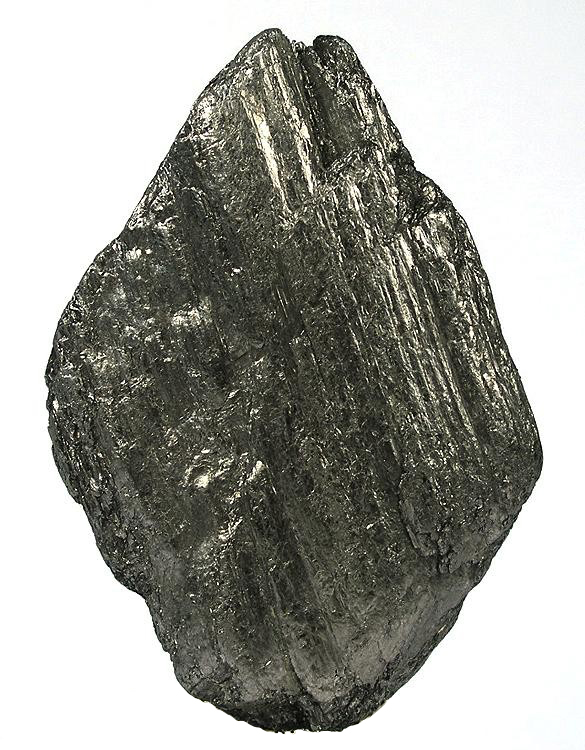Graphite
Carbon is an interesting element for many reasons, one of which is that it can form minerals of very different hardnesses. Carbon can hit a hardness of 10 when it’s a diamond, drop to 3 when it’s anthracite coal, or be as low as a 1 when it’s graphite. Surprisingly, graphite’s formula is the same as diamond, just “C.” But it’s one of the softest minerals, and that led to one of its most well-known uses: the “lead” in pencil lead is actually graphite. The name “graphite” comes from the Greek word for “writing,” and it’s a good name for the mineral that, starting in the 1800s, helped students to write on paper more easily. Although it can be soft enough to be used in pencils, graphite is really versatile and can be converted into many different forms. In the form of fibers, it can be used to make very strong and lightweight bicycle frames. Graphite can also be a very useful industrial mineral and is used in batteries, steel, and truck brakes because it can conduct electricity, harden steel, and resist high temperatures, respectively. It’s heat resistant enough that it was used to help protect the space shuttles from extreme heat as they passed through the Earth’s atmosphere on their way home, when they flew from 1981 to 2011.
| Formula | Group or Type | Shape | Hardness | Specific Gravity | Streak | Luster |
|---|---|---|---|---|---|---|
| C | — | Hexagonal | 1–2 | 1.9–2.3 | Black or steel gray | Metallic or dull |

